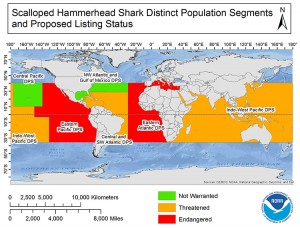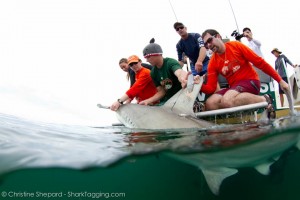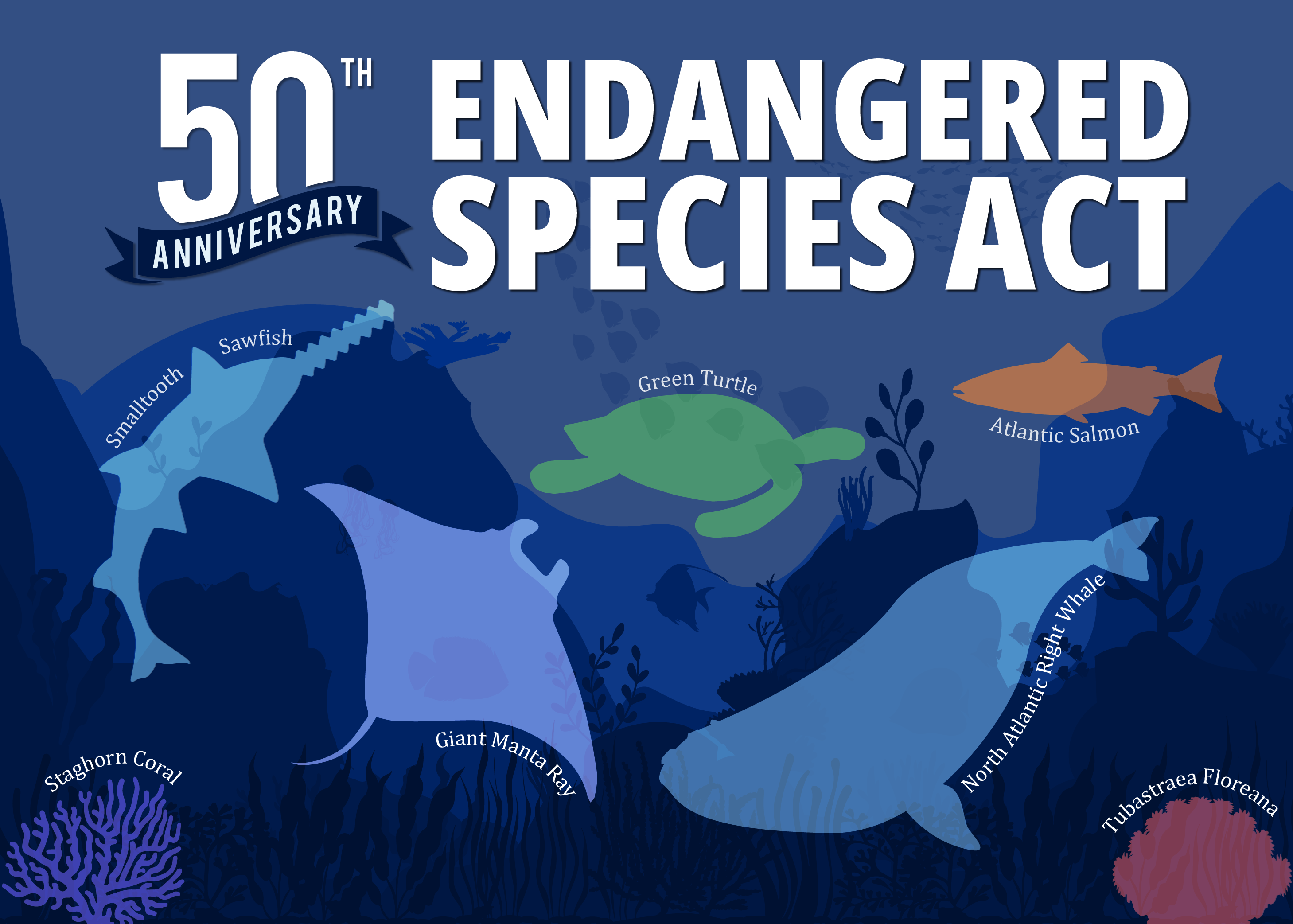

The Endangered Species Act is one of the strongest conservation laws on the planet, and to date, no shark has ever been given ESA protections. In recent weeks, however, the National Marine Fisheries Service has responded to a series of NGO petitions requesting ESA protections for two species of hammerhead sharks. NMFS proposes to list 2 “distinct” population segments” (DPS) of scalloped hammerhead sharks as endangered and 2 as threatened, with 2 DPS’s listed as “not warranted”. The response to the great hammerhead petition is not as developed (the petition itself is more recent), but notes that “the petitioned action may be warranted”.
I strongly believe that both of these species of hammerhead sharks need and qualify for Endangered Species Act protections. If you agree, I encourage you to submit an official public comment in support of listing both under the ESA following the instructions below. Failure to follow all instructions to the letter will result in your comment not being considered. Commenting on this blog post does not count as submitting a public comment, and neither does commenting on a Facebook post about this blog post. Online petitions will not be considered. This process is open to the public, but requires that we follow basic instructions.
To submit a public comment in support of great hammerhead ESA listings, click on the “comment now” button on this page and fill in the required information. To submit a public comment in support of scalloped hammerhead ESA listings, click on the “comment now” button on this page and fill in all the required information. You can also submit written comments via the mail to “Office of Protected Resources,NMFS, 1315 East-West Highway, Silver Spring, MD 20910 or by fax to 301-713-4060 attn: Maggie Miller. Please note that if you submit a comment by mail or fax, you need to include code NOAA-NMFS-2013-0046 for great hammerheads and code NOAA-NMFS-2011-0261 for scalloped hammerheads.
To help craft your public comment, I’ve written a list of 10 reasons why these sharks qualify for Endangered Species Act protections. Please do not just quote this post word-for-word, if you do then your comment will be considered a “form letter” and not an individual comment.
1) Both great and scalloped hammerheads are considered Endangered by the IUCN Shark Specialist Group. This is an independent and apolitical assessment made by expert scientists from around the world.
2) Hammerheads have suffered some of the most severe reported population declines of any species of sharks. Even among papers that focus on severe shark population declines, such as Julia Baum et al.’s 2003 “Collapse and Conservation of Shark Populations in the Northwest Atlantic“, it is noted that “the trend in abundance is most striking for hammerhead sharks.”
3) They are declining in population throughout their global range. Scientists have noted severe population declines of hammerhead sharks in the Northwest Atlantic, in the Mediterranean Sea, in the Caribbean sea, and in Australia and South Africa.

4) Both species are highly migratory, moving through multiple political jurisdictions. Therefore, management at the state level is inadequate.

hammerhead shark in the Northwest Atlantic”, showing the long distance migration of a satellite tagged great hammerhead shark.
5) Current regulations are fragmented and therefore limited in effectiveness. For example, although it is illegal to catch great, scalloped, or smooth hammerheads within Florida state waters, members of my lab have observed commercial fishers catching hammerheads immediately adjacent to (but outside of) state waters.
6) Scalloped hammerhead sharks are especially vulnerable to overfishing because of their mating aggregations. These aggregations are predictable in both time and space, allowing fishers to catch many at once.
7) Their large fins are particularly valuable in the global shark fin soup trade.
8 ) Many countries do not report their catch at the species level, complicating data analysis. Some only report their catch as “hammerhead”, while still others report catching “shark”. Without accurate and species-specific catch data, it is difficult to tell the status of a population. In cases like this, a precautionary approach seems appropriate.
9) Hammerhead sharks have some of the most severe physiological stress reactions to fisheries capture of any studied shark species. “Through blood physiology and telemetry studies conducted by our team in recent years, we have discovered that these species exhibit extreme physiological and metabolic disturbance when captured,” said Austin Gallager, a Ph.D. student in my lab. “Hammerhead shark species are incredibly agile predators that prey on fast-swimming fishes. We think these same metabolic pathways are enacted when these species are hooked, which results in exhaustion and low rates of survival.”
10) This stress reaction leads to extremely high bycatch mortality- approximately 90% of hammerhead sharks that are caught as bycatch and released are estimated to not survive the capture.

Please consider submitting a public comment for one or both species following the instructions above, and please let me know if you’ve done so by commenting on this blog post. As always, please let me know if you have any questions, and I’ll keep you posted as this important story progresses. For more information, please see the official Federal Register proposed rules for great hammerheads and scalloped hammerheads.


David, has your team noticed some mortality of your tagged hammerhead after tagging, if yes, what is the mortality rate and after how long after release?
Is there any point in writing if you’re not an american? I’m belgian, and I don’t live in the US.
While I agree with considering scalloped and great hammerheads for ESA protection, I think the real value here is “goosing” NMFS into enacting some more aggressive management actions for these species. Sandbar, sand tiger, and Atlantic white sharks are rebounding under fishery management actions (prohibited status for sand tigers and white sharks, a very limited fishery for sandbars) without the need for ESA listing. NMFS is just now getting around to working on hammerheads and is proposing very low quotas or possible prohibited status, motivated in no small part by the threat of listing. An ESA listing is not something to be taken lightly and has serious implications for research and coastal development as well as the fishery. I personally would rather see if future management actions are sufficient before bringing in the “nuclear option” of the ESA.
Yes, we have noticed some mortality after tagging, which caused us to revise our handling procedure to the current (much faster) method. I don’t know the mortality rate offhand but it varies from hours to days after capture (based on when satellite tags stop transmitting)
I think so but I’m not 100% sure
I agree that more aggressive management is needed, and that it could potentially be accomplished (but has not yet been) via existing fisheries regulations. ESA is definitely a last resort.
Thanks again for providing such clear instructions in navigating online petitions, comments, etc. I’ve submitted comments on both petitions and I’m glad to know I’m doing something that may actually be heard.